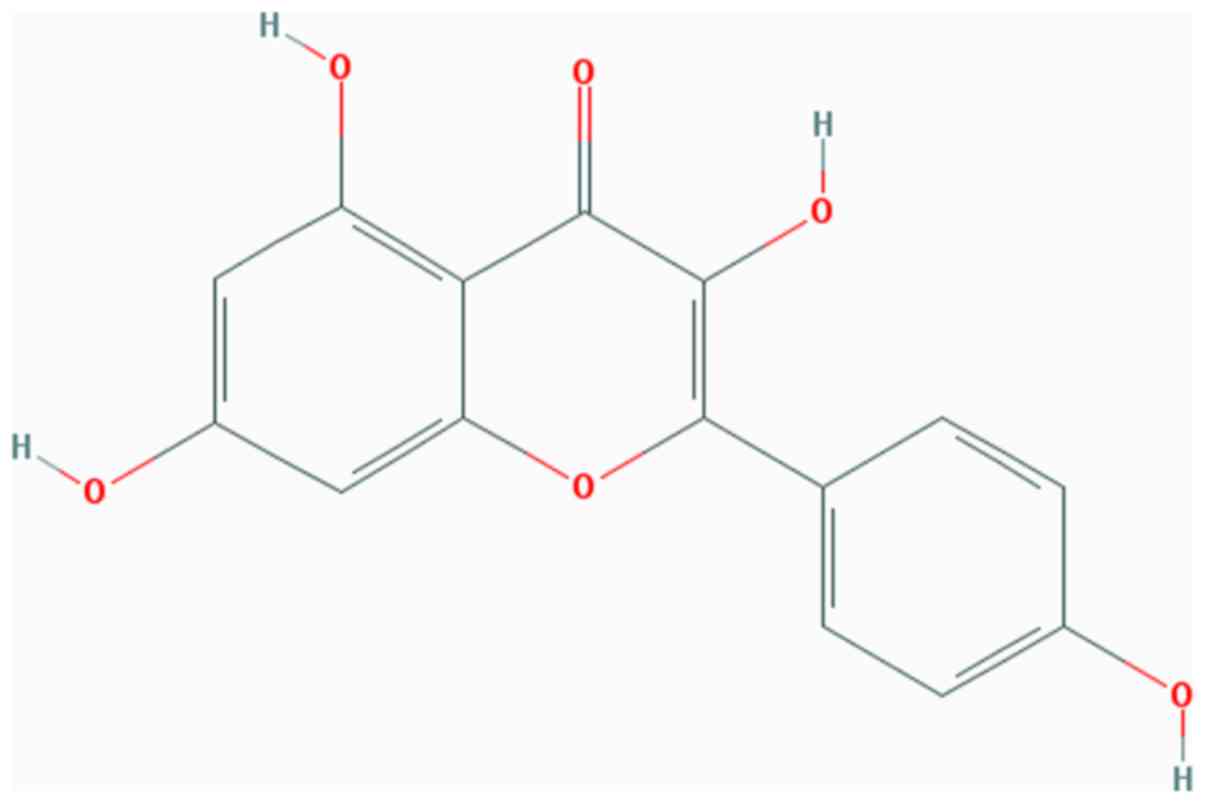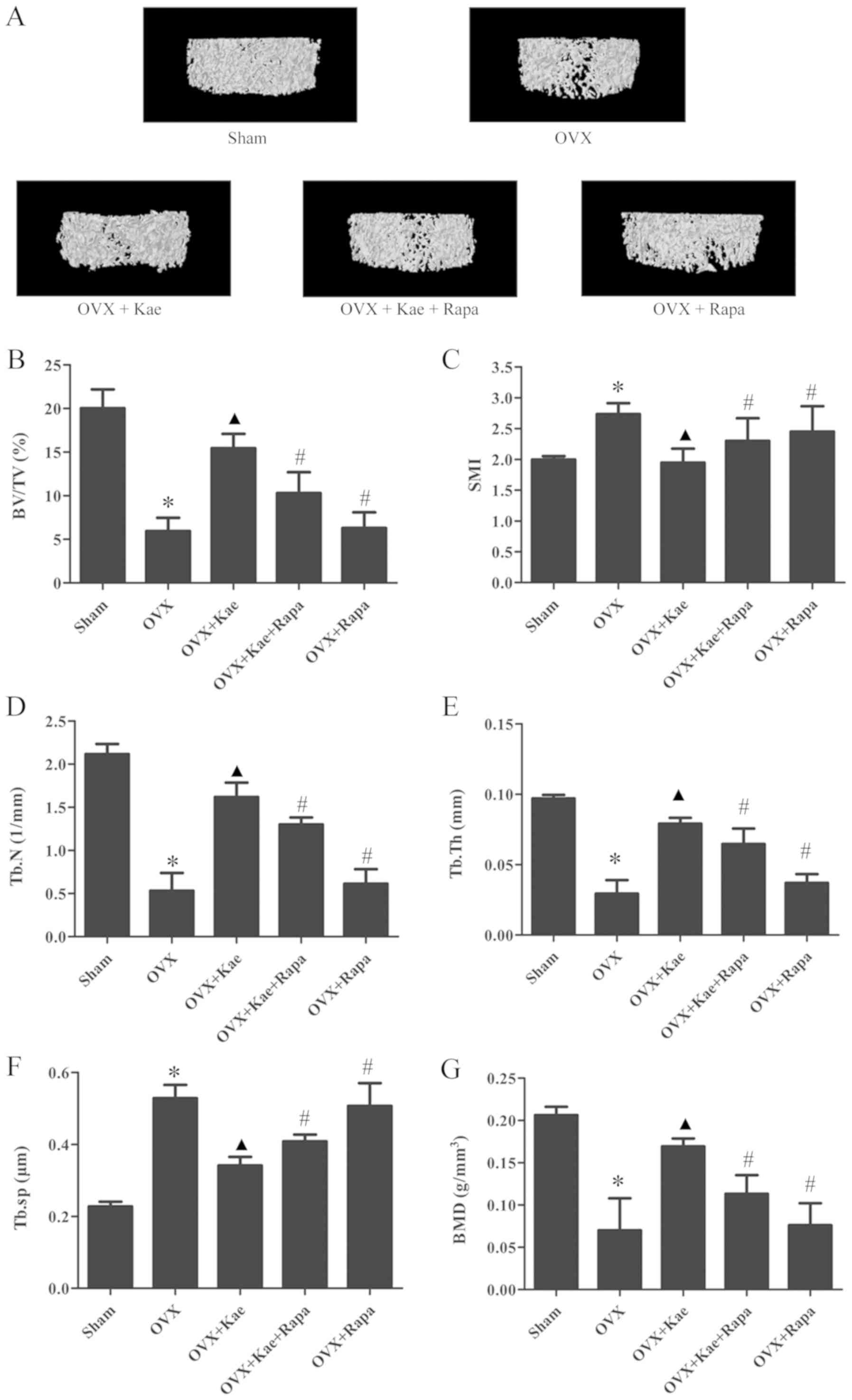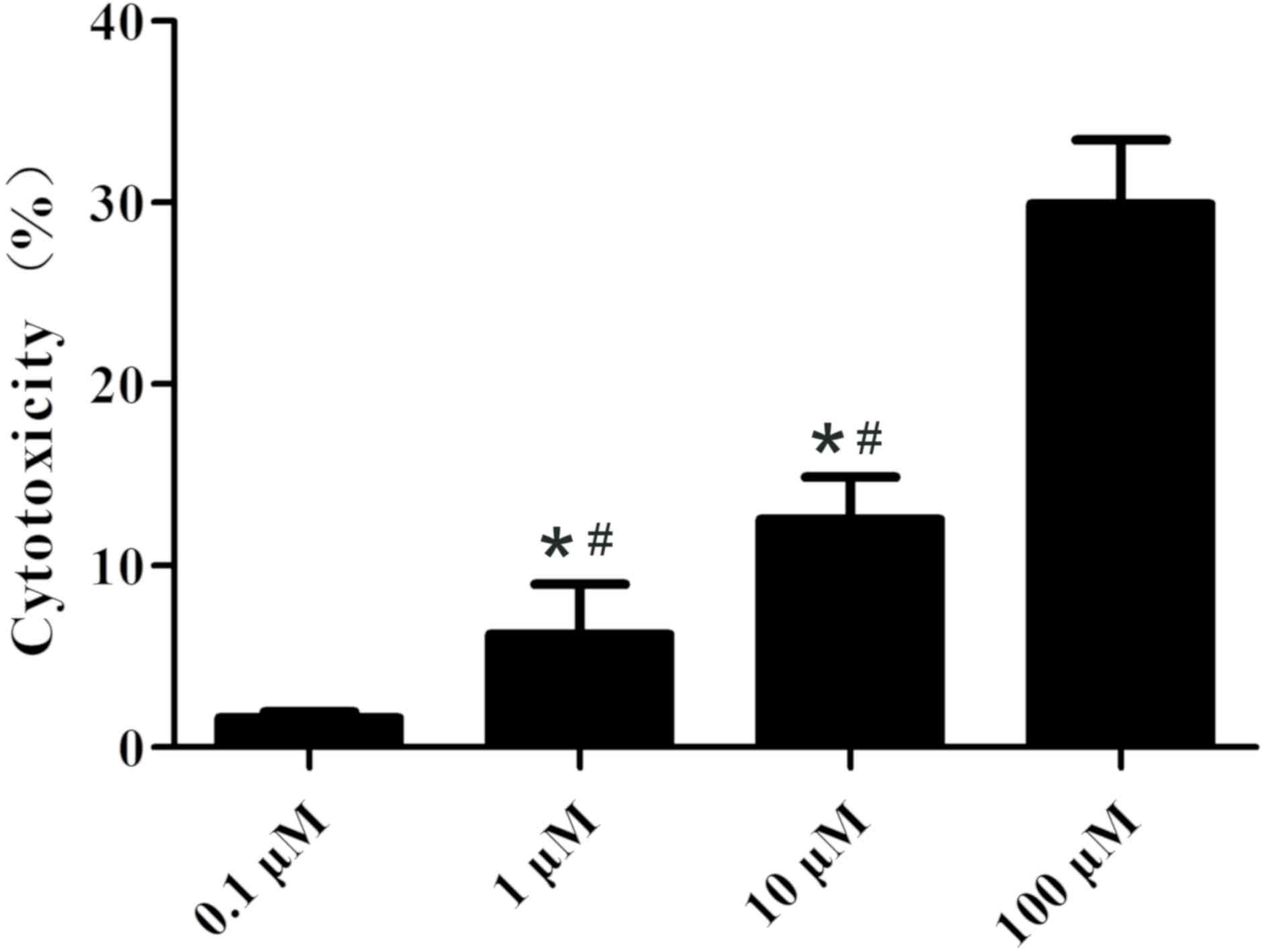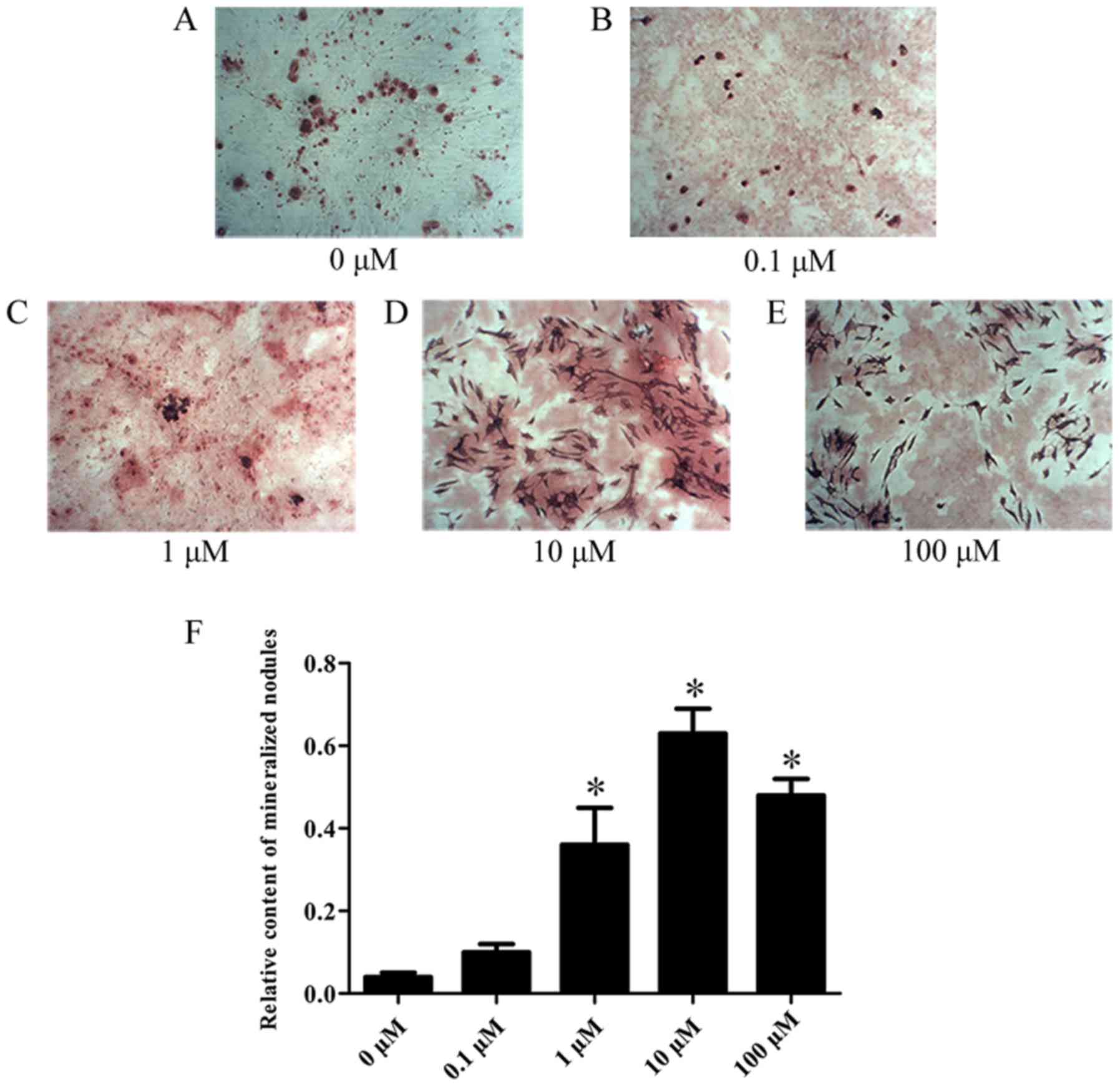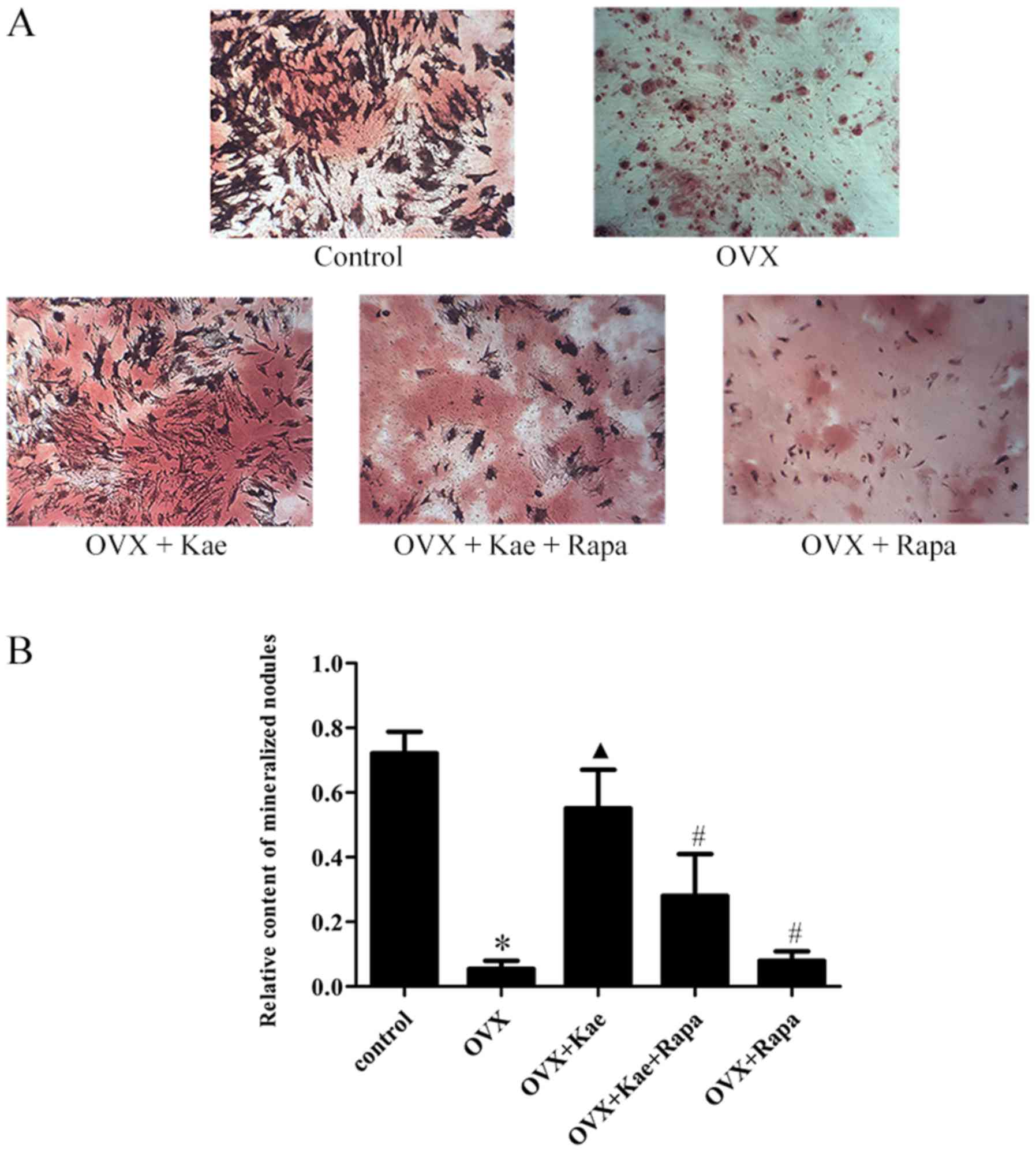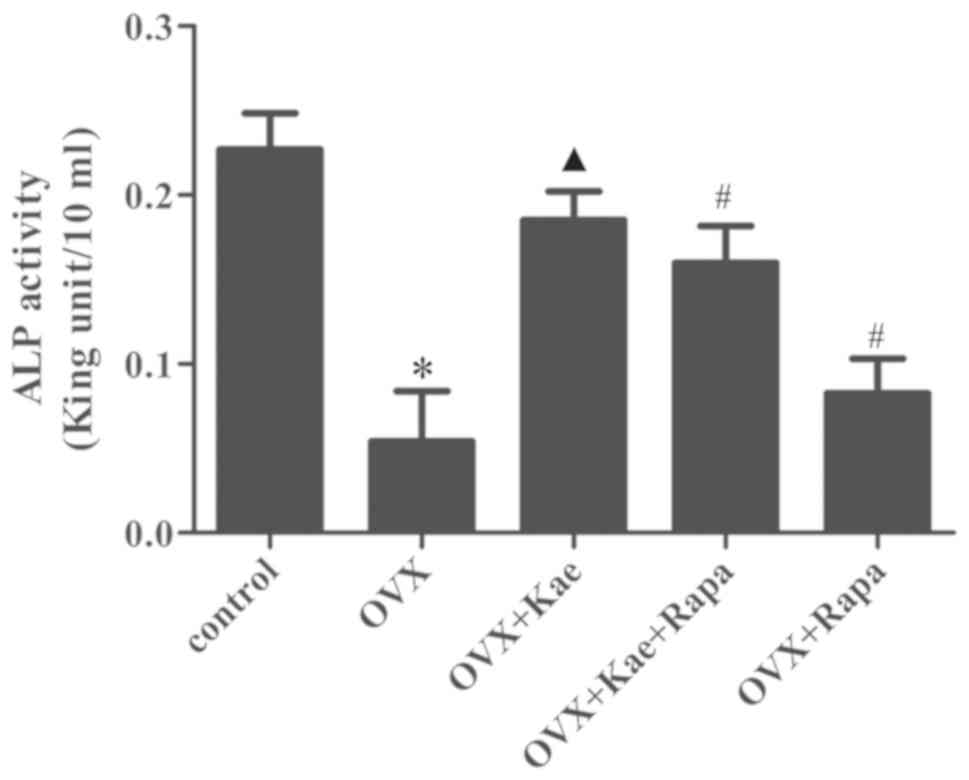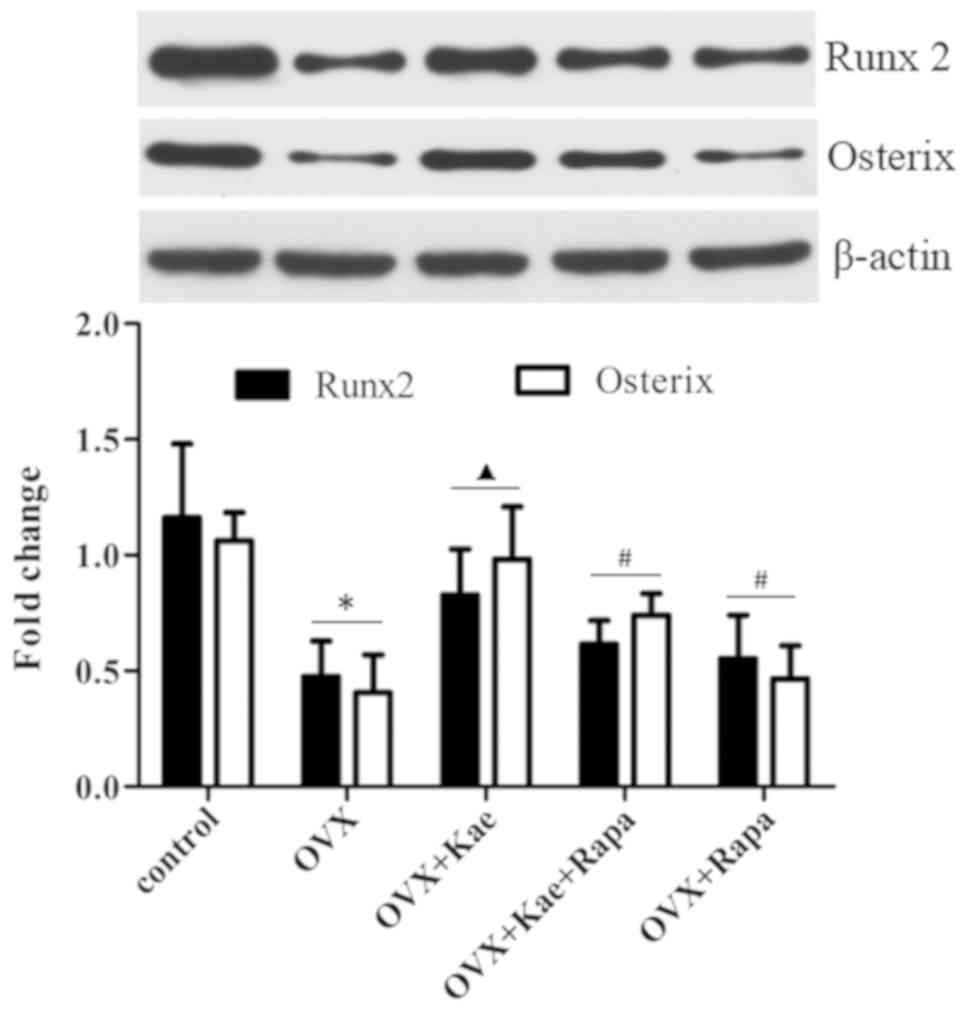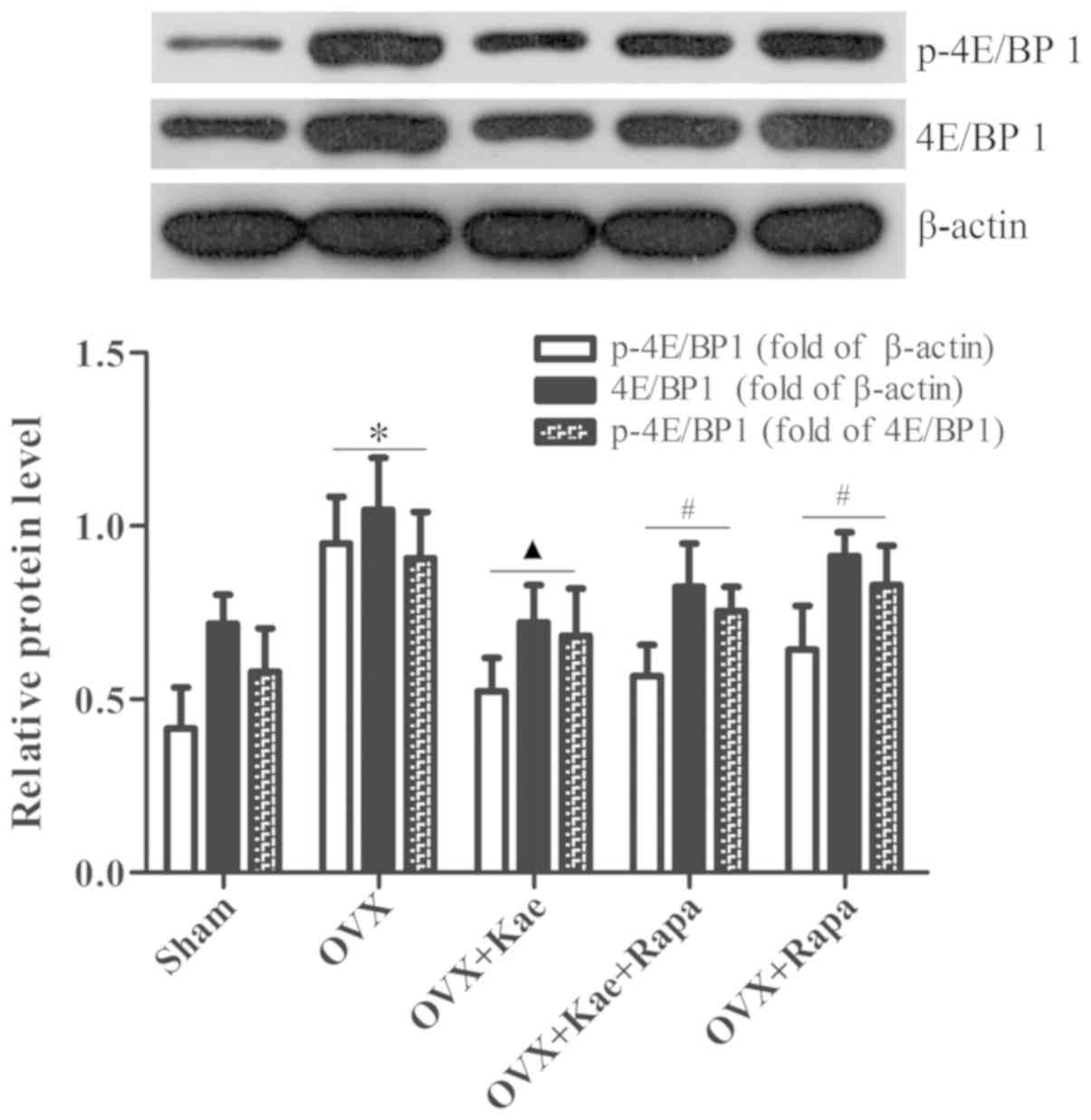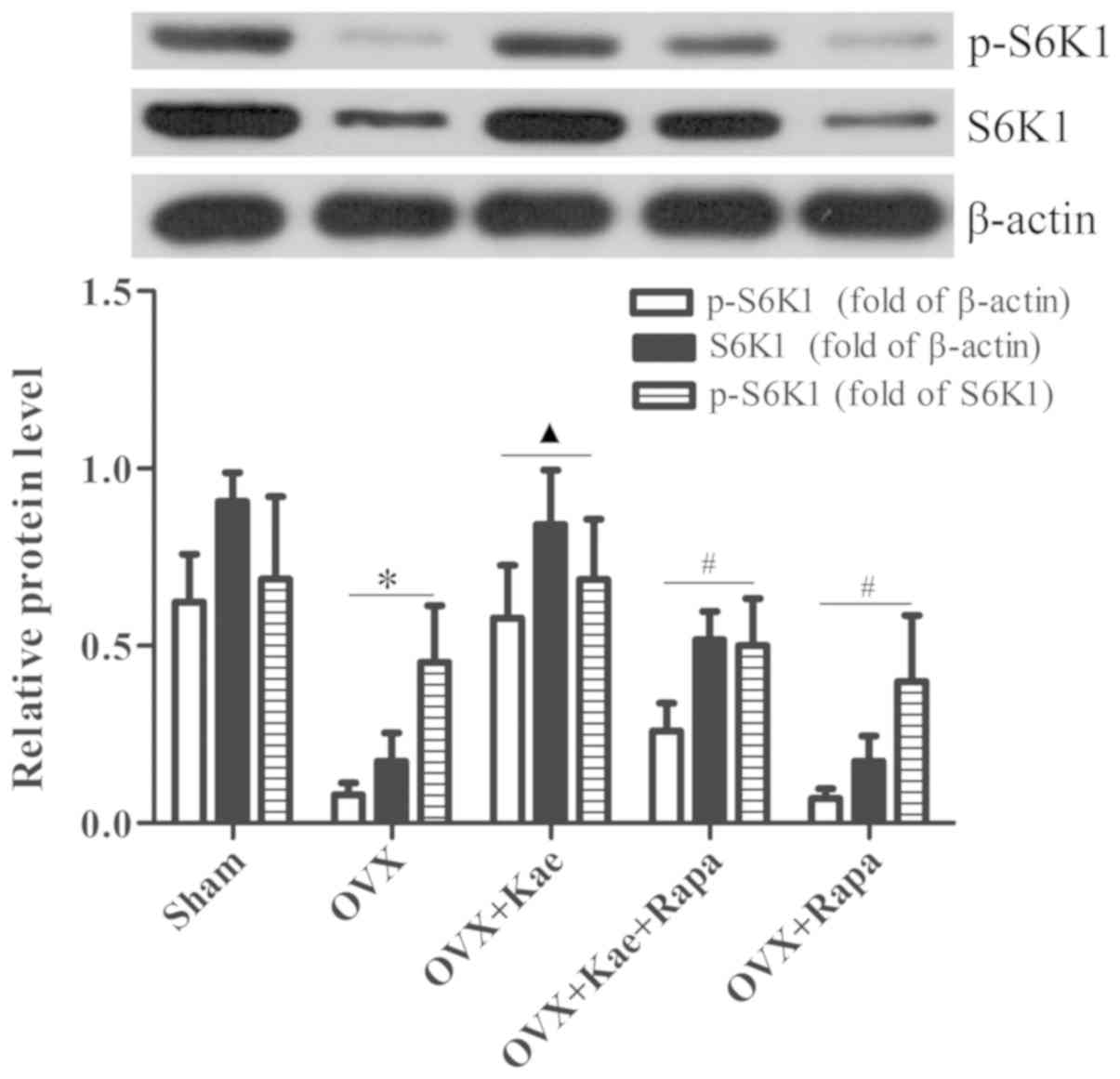|
1
|
Cosman F, de Beur SJ, LeBoff MS, Lewiecki
EM, Tanner B, Randall S and Lindsay R; National Osteoporosis
Foundation, : Clinician's guide to prevention and treatment of
osteoporosis. Osteoporos Int. 25:2359–2381. 2014. View Article : Google Scholar : PubMed/NCBI
|
|
2
|
Das S and Crockett JC: Osteoporosis-a
current view of pharmacological prevention and treatment. Drug Des
Devel Ther. 7:435–448. 2013.PubMed/NCBI
|
|
3
|
Rizzoli R, Reginster JY, Boonen S, Bréart
G, Diez-Perez A, Felsenberg D, Kaufman JM, Kanis JA and Cooper C:
Adverse reactions and drug-drug interactions in the management of
women with postmenopausal osteoporosis. Calcif Tissue Int.
89:91–104. 2011. View Article : Google Scholar : PubMed/NCBI
|
|
4
|
Adler RA, El-Hajj Fuleihan G, Bauer DC,
Camacho PM, Clarke BL, Clines GA, Compston JE, Drake MT, Edwards
BJ, Favus MJ, et al: Managing osteoporosis in patients on long-term
bisphosphonate treatment: Report of a task force of the American
society for bone and mineral research. J Bone Miner Res. 31:16–35.
2016. View Article : Google Scholar : PubMed/NCBI
|
|
5
|
Drieling RL, LaCroix AZ, Beresford SAA,
Boudreau DM, Kooperberg C, Chlebowski RT, Ko MG and Heckbert SR:
Long-Term oral bisphosphonate therapy and fractures in older women:
The Women's health initiative. J Am Geriatr Soc. 65:1924–1931.
2017. View Article : Google Scholar : PubMed/NCBI
|
|
6
|
Huang L, Yagura T and Chen S: Sedative
activity of hexane extract of Keampferia galangal L. and its
active compounds. J Ethnopharmacol. 120:123–125. 2008. View Article : Google Scholar : PubMed/NCBI
|
|
7
|
Devi KP, Malar DS, Nabavi SF, Sureda A,
Xiao J, Nabavi SM and Daglia M: Kaempferol and inflammation: From
chemistry to medicine. Pharmacol Res. 99:1–10. 2015. View Article : Google Scholar : PubMed/NCBI
|
|
8
|
Qin Y, Cui W, Yang X and Tong B:
Kaempferol inhibits the growth and metastasis of cholangiocarcinoma
in vitro and in vivo. Acta Biochim Biophys Sin (Shanghai).
48:238–245. 2016. View Article : Google Scholar : PubMed/NCBI
|
|
9
|
Suchal K, Malik S, Khan SI, Malhotra RK,
Goyal S, Bhatia J, Ojha S and Arya D: Molecular pathways involved
in the amelioration of myocardial injury in diabetic rats by
kaempferol. Int J Mol Sci. 18(pii): E10012017. View Article : Google Scholar : PubMed/NCBI
|
|
10
|
An M and Kim M: Protective effects of
kaempferol against cardiac sinus node dysfunction via CaMKII
deoxidization. Anat Cell Biol. 48:235–243. 2015. View Article : Google Scholar : PubMed/NCBI
|
|
11
|
Mühlbauer RC and Li F: Effect of
vegetables on bone metabolism. Nature. 401:343–344. 1999.
View Article : Google Scholar : PubMed/NCBI
|
|
12
|
Mitra A, Luna JI, Marusina AI, Merleev A,
Kundu-Raychaudhuri S, Fiorentino D, Raychaudhuri SP and Maverakis
E: Dual mTOR inhibition is required to prevent TGF-β-mediated
fibrosis: Implications for scleroderma. J Invest Dermatol.
135:2873–2876. 2015. View Article : Google Scholar : PubMed/NCBI
|
|
13
|
Conciatori F, Ciuffreda L, Bazzichetto C,
Falcone I, Pilotto S, Bria E, Cognetti F and Milella M: mTOR
Cross-talk in cancer and potential for combination therapy. Cancers
(Basel). 10(pii): E232018. View Article : Google Scholar : PubMed/NCBI
|
|
14
|
Karner CM, Lee SY and Long F: Bmp induces
osteoblast differentiation through both Smad4 and mTORC1 signaling.
Mol Cell Biol. 37(pii): e00253–16. 2017.PubMed/NCBI
|
|
15
|
Fitter S, Matthews MP, Martin SK, Xie J,
Ooi SS, Walkley CR, Codrington JD, Ruegg MA, Hall MN, Proud CG, et
al: mTORC1 Plays an important role in skeletal development by
controlling preosteoblast differentiation. Mol Cell Biol. 37(pii):
e00668–16. 2017.PubMed/NCBI
|
|
16
|
Liu DM, Zhao L, Liu TT, Jiao PL, Zhao DD,
Shih MS, Tao B, Sun LH, Zhao HY and Liu JM: Rictor/mTORC2 loss in
osteoblasts impairs bone mass and strength. Bone. 90:50–58. 2016.
View Article : Google Scholar : PubMed/NCBI
|
|
17
|
Chen J, Tu X, Esen E, Joeng KS, Lin C,
Arbeit JM, Rüegg MA, Hall MN, Ma L and Long F: WNT7B promotes bone
formation in part through mTORC1. PLoS Genet. 10:e10041452014.
View Article : Google Scholar : PubMed/NCBI
|
|
18
|
Zhan JK, Wang YJ, Wang Y, Wang S, Tan P,
Huang W and Liu YS: The mammalian target of rapamycin signalling
pathway is involved in osteoblastic differentiation of vascular
smooth muscle cells. Can J Cardiol. 30:568–575. 2014. View Article : Google Scholar : PubMed/NCBI
|
|
19
|
Min J, Yuan Z, Zhang Q, Lin S, Wang K and
Luo J: Analysis of anti-osteoporosis function of chlorogenic acid
by gene microarray profiling in ovariectomy rat model. Biosci Rep.
38(pii): BSR201807752018. View Article : Google Scholar : PubMed/NCBI
|
|
20
|
Kilkenny C, Browne WJ, Cuthill IC, Emerson
M and Altman DG: Improving bioscience research reporting: The
ARRIVE guidelines for reporting animal research. PLoS Biol.
8:e10004122010. View Article : Google Scholar : PubMed/NCBI
|
|
21
|
Jiang Y, Jahagirdar BN, Reinhardt RL,
Schwartz RE, Keene CD, Ortiz-Gonzalez XR, Reyes M, Lenvik T, Lund
T, Blackstad M, et al: Pluripotency of mesenchymal stem cells
derived from adult marrow. Nature. 418:41–49. 2002. View Article : Google Scholar : PubMed/NCBI
|
|
22
|
Riggs BL, Khosla S and Melton LJ III: Sex
steroids and the construction and conservation of the adult
skeleton. Endocr Rev. 23:279–302. 2002. View Article : Google Scholar : PubMed/NCBI
|
|
23
|
Chien KR and Karsenty G: Longevity and
lineages: Toward the integrative biology of degenerative diseases
in heart, muscle, and bone. Cell. 120:533–544. 2005. View Article : Google Scholar : PubMed/NCBI
|
|
24
|
Hegarty VM, May HM and Khaw KT: Tea
drinking and bone mineral density in older women. Am J Clin Nutr.
71:1003–1007. 2000. View Article : Google Scholar : PubMed/NCBI
|
|
25
|
Guo AJ, Choi RC, Zheng KY, Chen VP, Dong
TT, Wang ZT, Vollmer G, Lau DT and Tsim KW: Kaempferol as a
flavonoid induces osteoblastic differentiation via estrogen
receptor signaling. Chin Med. 7:102012. View Article : Google Scholar : PubMed/NCBI
|
|
26
|
Trivedi R, Kumar S, Kumar A, Siddiqui JA,
Swarnkar G, Gupta V, Kendurker A, Dwivedi AK, Romero JR and
Chattopadhyay N: Kaempferol has osteogenic effect in ovariectomized
adult Sprague-Dawley rats. Mol Cell Endocrinol. 289:85–93. 2008.
View Article : Google Scholar : PubMed/NCBI
|
|
27
|
Nowak B, Matuszewska A, Nikodem A,
Filipiak J, Landwójtowicz M, Sadanowicz E, Jędrzejuk D, Rzeszutko
M, Zduniak K, Piasecki T, et al: Oral administration of kaempferol
inhibits bone loss in rat model of ovariectomy-induced osteopenia.
Pharmacol Rep. 69:1113–1119. 2017. View Article : Google Scholar : PubMed/NCBI
|
|
28
|
Kim CJ, Shin SH, Kim BJ, Kim CH, Kim JH,
Kang HM, Park BS and Kim IR: The effects of Kaempferol-inhibited
autophagy on osteoclast formation. Int J Mol Sci. 19(pii):
E1252018. View Article : Google Scholar : PubMed/NCBI
|
|
29
|
Adhikary S, Choudhary D, Ahmad N, Karvande
A, Kumar A, Banala VT, Mishra PR and Trivedi R: Dietary flavonoid
kaempferol inhibits glucocorticoid-induced bone loss by promoting
osteoblast survival. Nutrition. 53:64–76. 2018. View Article : Google Scholar : PubMed/NCBI
|
|
30
|
Kim IR, Kim SE, Baek HS, Kim BJ, Kim CH,
Chung IK, Park BS and Shin SH: The role of kaempferol-induced
autophagy on differentiation and mineralization of osteoblastic
MC3T3-E1 cells. BMC Complement Altern Med. 16:3332016. View Article : Google Scholar : PubMed/NCBI
|
|
31
|
Chen Q, Shou P, Zheng C, Jiang M, Cao G,
Yang Q, Cao J, Xie N, Velletri T, Zhang X, et al: Fate decision of
mesenchymal stem cells: Adipocytes or osteoblasts? Cell Death
Differ. 23:1128–1139. 2016. View Article : Google Scholar : PubMed/NCBI
|
|
32
|
Eriksen EF: Cellular mechanisms of bone
remodeling. Rev Endocr Metab Disord. 11:219–227. 2010. View Article : Google Scholar : PubMed/NCBI
|
|
33
|
Zuk PA, Zhu M, Ashjian P, De Ugarte DA,
Huang JI, Mizuno H, Alfonso ZC, Fraser JK, Benhaim P and Hedrick
MH: Human adipose tissue is a source of multipotent stem cells. Mol
Biol Cell. 13:4279–4295. 2002. View Article : Google Scholar : PubMed/NCBI
|
|
34
|
Lucero CM, Vega OA, Osorio MM, Tapia JC,
Antonelli M, Stein GS, van Wijnen AJ and Galindo MA: The
cancer-related transcription factor Runx2 modulates cell
proliferation in human osteosarcoma cell lines. J Cell Physiol.
228:714–723. 2013. View Article : Google Scholar : PubMed/NCBI
|
|
35
|
Wysokinski D, Pawlowska E and Blasiak J:
RUNX2: A master bone growth regulator that may be involved in the
DNA damage response. DNA Cell Biol. 34:305–315. 2015. View Article : Google Scholar : PubMed/NCBI
|
|
36
|
Nakashima K, Zhou X, Kunkel G, Zhang Z,
Deng JM, Behringer RR and de Crombrugghe B: The novel zinc
finger-containing transcription factor osterix is required for
osteoblast differentiation and bone formation. Cell. 108:17–29.
2002. View Article : Google Scholar : PubMed/NCBI
|
|
37
|
Nishimura R, Wakabayashi M, Hata K,
Matsubara T, Honma S, Wakisaka S, Kiyonari H, Shioi G, Yamaguchi A,
Tsumaki N, et al: Osterix regulates calcification and degradation
of chondrogenic matrices through matrix metalloproteinase 13
(MMP13) expression in association with transcription factor Runx2
during endochondral ossification. J Biol Chem. 287:33179–33190.
2012. View Article : Google Scholar : PubMed/NCBI
|
|
38
|
Zoncu R, Efeyan A and Sabatini DM: mTOR:
From growth signal integration to cancer, diabetes and ageing. Nat
Rev Mol Cell Biol. 12:21–35. 2011. View Article : Google Scholar : PubMed/NCBI
|
|
39
|
Howell JJ and Manning BD: mTOR couples
cellular nutrient sensing to organismal metabolic homeostasis.
Trends Endocrinol Metab. 22:94–102. 2011. View Article : Google Scholar : PubMed/NCBI
|
|
40
|
Dai N, Rapley J, Angel M, Yanik MF, Blower
MD and Avruch J: mTOR phosphorylates IMP2 to promote IGF2 mRNA
translation by internal ribosomal entry. Genes Dev. 25:1159–1172.
2011. View Article : Google Scholar : PubMed/NCBI
|
|
41
|
Cybulski N and Hall MN: TOR complex 2: A
signaling pathway of its own. Trends Biochem Sci. 34:620–627. 2009.
View Article : Google Scholar : PubMed/NCBI
|
|
42
|
Alessi DR, Pearce LR and García-Martínez
JM: New insights into mTOR signaling: MTORC2 and beyond. Sci
Signal. 2:pe272009. View Article : Google Scholar : PubMed/NCBI
|
|
43
|
Steelman LS, Martelli AM, Cocco L, Libra
M, Nicoletti F, Abrams SL and McCubrey JA: The therapeutic
potential of mTOR inhibitors in breast cancer. Br J Clin Pharmacol.
82:1189–1212. 2016. View Article : Google Scholar : PubMed/NCBI
|
|
44
|
Liu ZG, Tang J, Chen Z and Zhang H, Wang
H, Yang J and Zhang H: The novel mTORC1/2 dual inhibitor INK128
enhances radiosensitivity of breast cancer cell line MCF-7. Int J
Oncol. 49:1039–1045. 2016. View Article : Google Scholar : PubMed/NCBI
|
|
45
|
Ling S, Song L, Fan N, Feng T, Liu L, Yang
X, Wang M, Li Y, Tian Y, Zhao F, et al: Combination of metformin
and sorafenib suppresses proliferation and induces autophagy of
hepatocellular carcinoma via targeting the mTOR pathway. Int J
Oncol. 50:297–309. 2017. View Article : Google Scholar : PubMed/NCBI
|
|
46
|
Guo H, Xu Y, Wang F, Shen Z, Tuo X, Qian
H, Wang H and Wang K: Clinical associations between ASCT2 and
p-mTOR in the pathogenesis and prognosis of epithelial ovarian
cancer. Oncol Rep. 40:3725–3733. 2018.PubMed/NCBI
|
|
47
|
Nicoletti F, Fagone P, Meroni P, McCubrey
J and Bendtzen K: mTOR as a multifunctional therapeutic target in
HIV infection. Drug Discov Today. 16:715–721. 2011. View Article : Google Scholar : PubMed/NCBI
|
|
48
|
Donia M, McCubrey JA, Bendtzen K and
Nicoletti F: Potential use of rapamycin in HIV infection. Br J Clin
Pharmacol. 70:784–793. 2010. View Article : Google Scholar : PubMed/NCBI
|
|
49
|
Mammana S, Bramanti P, Mazzon E, Cavalli
E, Basile MS, Fagone P, Petralia MC, McCubrey JA, Nicoletti F and
Mangano K: Preclinical evaluation of the PI3K/Akt/mTOR pathway in
animal models of multiple sclerosis. Oncotarget. 9:8263–8277. 2018.
View Article : Google Scholar : PubMed/NCBI
|
|
50
|
Donia M, Mangano K, Amoroso A, Mazzarino
MC, Imbesi R, Castrogiovanni P, Coco M, Meroni P and Nicoletti F:
Treatment with rapamycin ameliorates clinical and histological
signs of protracted relapsing experimental allergic
encephalomyelitis in Dark Agouti rats and induces expansion of
peripheral CD4+CD25+Foxp3+ regulatory T cells. J Autoimmun.
33:135–140. 2009. View Article : Google Scholar : PubMed/NCBI
|
|
51
|
Oaks Z, Winans T, Huang N, Banki K and
Perl A: Activation of the mechanistic target of Rapamycin in SLE:
Explosion of evidence in the last five years. Curr Rheumatol Rep.
18:732016. View Article : Google Scholar : PubMed/NCBI
|
|
52
|
Chen J and Long F: mTOR signaling in
skeletal development and disease. Bone Res. 6:12018. View Article : Google Scholar : PubMed/NCBI
|
|
53
|
Wu H, Wu Z, Li P, Cong Q, Chen R, Xu W,
Biswas S, Liu H, Xia X, Li S, et al: Bone size and quality
regulation: Concerted actions of mTOR in mesenchymal stromal cells
and osteoclasts. Stem Cell Reports. 8:1600–1616. 2017. View Article : Google Scholar : PubMed/NCBI
|
|
54
|
Chen C, Akiyama K, Wang D, Xu X, Li B,
Moshaverinia A, Brombacher F, Sun L and Shi S: mTOR inhibition
rescues osteopenia in mice with systemic sclerosis. J Exp Med.
212:73–91. 2015. View Article : Google Scholar : PubMed/NCBI
|
|
55
|
Li SF, Tang JJ, Chen J, Zhang P, Wang T,
Chen TY, Yan B, Huang B, Wang L, Huang MJ, et al: Regulation of
bone formation by baicalein via the mTORC1 pathway. Drug Des Devel
Ther. 9:5169–5183. 2015.PubMed/NCBI
|
|
56
|
Chen S, Jia L, Zhang S, Zheng Y and Zhou
Y: DEPTOR regulates osteogenic differentiation via inhibiting
MEG3-mediated activation of BMP4 signaling and is involved in
osteoporosis. Stem Cell Res Ther. 9:1852018. View Article : Google Scholar : PubMed/NCBI
|
|
57
|
Martin SK, Fitter S, Bong LF, Drew JJ,
Gronthos S, Shepherd PR and Zannettino AC: NVP-BEZ235, a dual pan
class I PI3 kinase and mTOR inhibitor, promotes osteogenic
differentiation in human mesenchymal stromal cells. J Bone Miner
Res. 25:2126–2137. 2010. View Article : Google Scholar : PubMed/NCBI
|
|
58
|
Xu S, Zhang Y, Liu B, Li K, Huang B, Yan
B, Zhang Z, Liang K, Jia C, Lin J, et al: Activation of mTORC1 in B
lymphocytes promotes osteoclast formation via regulation of
β-catenin and RANKL/OPG. J Bone Miner Res. 31:1320–1333. 2016.
View Article : Google Scholar : PubMed/NCBI
|
|
59
|
Dai Q, Han Y, Xie F, Ma X, Xu Z, Liu X,
Zou W and Wang J: A RANKL-based osteoclast culture assay of mouse
bone marrow to investigate the role of mTORC1 in osteoclast
formation. J Vis Exp. Mar 15–2018.doi: 10.3791/56468. View Article : Google Scholar
|
|
60
|
Dai Q, Xie F, Han Y, Ma X, Zhou S, Jiang
L, Zou W and Wang J: Inactivation of Regulatory-associated protein
of mTOR (Raptor)/mammalian target of rapamycin complex 1 (mTORC1)
signaling in osteoclasts increases bone mass by inhibiting
osteoclast differentiation in mice. J Biol Chem. 292:196–204. 2017.
View Article : Google Scholar : PubMed/NCBI
|
|
61
|
Wang Y, Yi XD and Li CD: Suppression of
mTOR signaling pathway promotes bone marrow mesenchymal stem cells
differentiation into osteoblast in degenerative scoliosis: In vivo
and in vitro. Mol Biol Rep. 44:129–137. 2017. View Article : Google Scholar : PubMed/NCBI
|
|
62
|
Che J, Liang B, Zhang Y, Wang Y, Tang J
and Shi G: Kaempferol alleviates ox-LDL-induced apoptosis by
up-regulation of autophagy via inhibiting PI3K/Akt/mTOR pathway in
human endothelial cells. Cardiovasc Pathol. 31:57–62. 2017.
View Article : Google Scholar : PubMed/NCBI
|
|
63
|
Varshney R, Gupta S and Roy P:
Cytoprotective effect of kaempferol against palmitic acid-induced
pancreatic β-cell death through modulation of autophagy via
AMPK/mTOR signaling pathway. Mol Cell Endocrinol. 448:1–20. 2017.
View Article : Google Scholar : PubMed/NCBI
|
|
64
|
Kim GD: Kaempferol inhibits angiogenesis
by suppressing HIF-1α and VEGFR2 Activation via ERK/p38 MAPK and
PI3K/Akt/mTOR signaling pathways in endothelial cells. Prev Nutr
Food Sci. 22:320–326. 2017. View Article : Google Scholar : PubMed/NCBI
|















